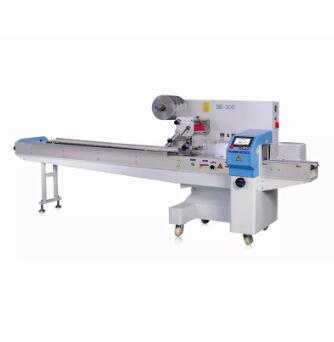The Art of Loading Packaging Material: A Guide to Packing Machinery
2024-03-16
In the intricate world of packaging, the seamless operation of packing machinery relies on the precise loading of packaging materials or films. Whether it's for food products, consumer goods, or industrial applications, understanding the process of loading packaging material onto packing machinery is essential for optimizing efficiency and ensuring product integrity. Let's explore the art and science behind this crucial step in the packaging process.
1. Selection of Packaging Material:
1. Material Compatibility:
Choosing the appropriate packaging material is the first step in the loading process. Factors such as product type, shelf life requirements, and environmental considerations influence the selection of materials, which can include films, foils, paperboard, and more.
2. Material Properties:
Consideration must be given to the properties of the packaging material, including thickness, flexibility, barrier properties, and sealability, to ensure compatibility with the packaging machinery and the specific requirements of the product being packaged.
2. Preparation of Packaging Material:
1. Unwinding or Unrolling:
In the case of roll-fed packaging machinery, such as form-fill-seal (FFS) machines or vertical form-fill-seal (VFFS) machines, the packaging material is typically supplied in rolls. The material must be unwound or unrolled and fed into the machine in a controlled manner.
2. Tension Control:
Maintaining proper tension in the packaging material is critical to prevent wrinkles, tears, or misalignment during the packaging process. Tension control mechanisms, such as pneumatic brakes or electronic tension controllers, ensure consistent material feed.
3. Loading onto Packing Machinery:
1. Feeding Mechanisms:
Various feeding mechanisms are used to guide the packaging material into the machine, including belts, rollers, and vacuum systems. These mechanisms ensure smooth and uniform material feed, minimizing the risk of jams or disruptions.
2. Alignment and Registration:
Precision alignment and registration systems ensure that the packaging material is accurately positioned and synchronized with the machine's sealing and cutting mechanisms. Optical sensors, markers, or registration marks on the material aid in achieving precise alignment.
4. Control and Monitoring:
1. Machine Settings:
Operators adjust machine settings such as speed, temperature, and pressure to optimize performance and ensure proper sealing, cutting, and forming of the packaging material.
2. Quality Control:
Continuous monitoring of the packaging process is essential to detect any defects or deviations in material feed, sealing integrity, or product appearance. Automated inspection systems can identify and reject faulty packages to maintain quality standards.
5. Maintenance and Optimization:
1. Cleaning and Lubrication:
Regular maintenance of packing machinery, including cleaning and lubrication of moving parts, is essential to prevent downtime and ensure smooth operation.
2. Process Optimization:
Continuous improvement initiatives, such as fine-tuning machine settings, optimizing material feed rates, and implementing technological advancements, help maximize efficiency and productivity in packaging operations.
Conclusion:
In conclusion, the loading of packaging material onto packing machinery is a meticulous process that requires careful selection, preparation, and handling of materials. By ensuring compatibility, proper tension control, precise alignment, and vigilant monitoring, manufacturers can optimize packaging operations and achieve consistent, high-quality results. Embracing technological advancements and best practices in packaging machinery and materials management further enhances efficiency, reliability, and product integrity in the ever-evolving landscape of packaging. Through attention to detail and continuous improvement efforts, packaging professionals can navigate the complexities of material loading with confidence and precision, delivering superior packaging solutions to meet the needs of diverse industries and consumers alike.



